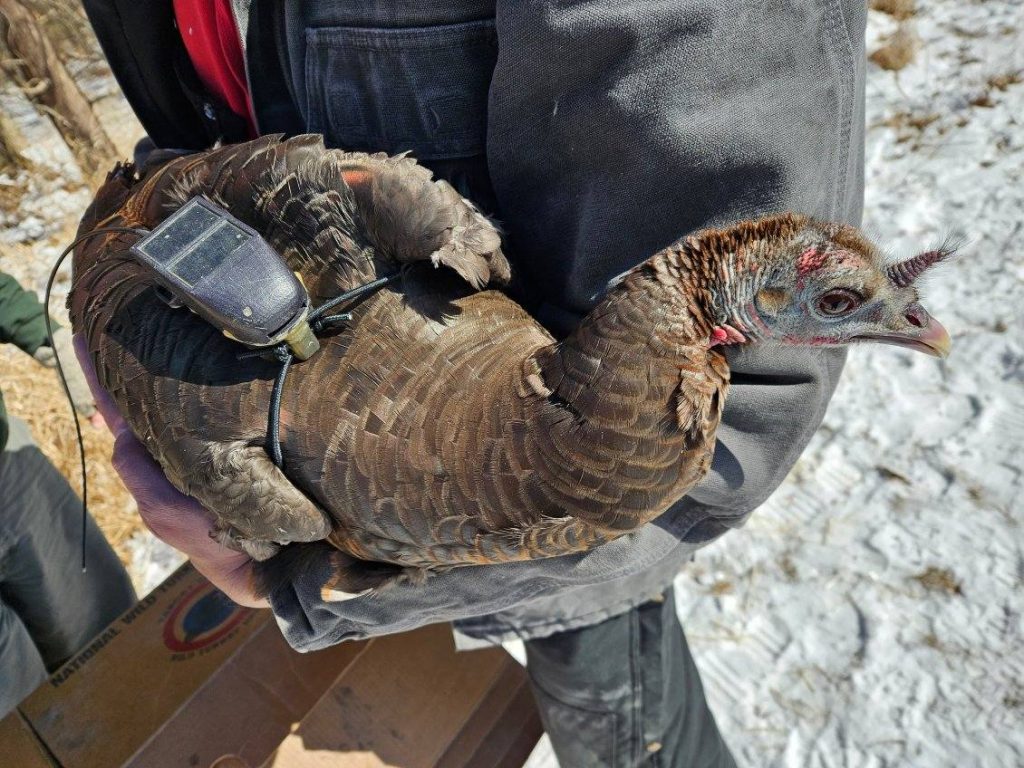NWTF Funds Habitat and Mammalian Predation Research in Iowa
EDGEFIELD, S.C. — The NWTF is helping fund an ongoing wild turkey study conducted by the Iowa Department of Natural Resources that seeks to better understand what factors are driving population changes. The Iowa DNR is using funding provided from the NWTF’s National Request for Proposals Program to further extend the research to complete genetic analyses to determine the species-specific rates of mammalian predation of nests and hens.
Thanks to support from dedicated partners — such as the Bass Pro Shops and Cabela’s Outdoor Fund, Mossy Oak and NWTF state chapters — the RFP program is an aggressive, annual effort to fund critical wild turkey research projects nationwide.
The Iowa DNR is conducting research that looks at several different factors, primarily focused on understanding turkey nest success and hen survival. The DNR aims to complete a comprehensive study of wild turkey production and provide critical information to address emerging management concerns in Iowa and the Midwest.
“The last time we did a study like this was in the early 1990s, and we know that there's been a lot that has changed,” said Dan Kaminski, Iowa DNR wildlife research biologist. “Basically, we're just trying to understand what's going on with turkey population demographics, whether it's survival, fecundity, mortality, habitat use, anthropogenic factors, disease or any of that sort of stuff.”
With the RFP funding from the NWTF, researchers are now conducting genetic tests to see what kind of mammals are predating nests. By using GPS transmitters, they are able to locate abandoned nests and conduct a couple of different partnered studies with the NWTF. Kaminski and his team are using non-invasive molecular genetic techniques to collect mammalian saliva from predated eggs and carcasses to look at species-specific predation rates on turkeys or turkey nests.
“The genetic methods that we're using is a novel technique for identifying nest predators, especially in the turkey world,” said Kaminski. “If you look at older literature, most of the species-specific predation rates that are reported were based off of anecdotal visual assessments, which is really arbitrary. This is one of the first attempts to get a quantitative assessment of species-specific nest predation rates, and preliminary data shows a diversity of species.”
Although researchers are tracking predation, they are not seeking to demonize any one species of mammalian carnivore because predation is a natural part of turkey ecology.
“Wild turkeys have evolved several mechanisms to avoid predation or to absorb some level of predation,” he said. “But if we can understand a little bit more about what's driving predation, tying it to weather, rainfall, temperature and habitat type, then, with that knowledge, we can hopefully provide habitat management recommendations to say, ‘these are the things that make really good turkey habitat, and these are the factors that help turkeys avoid predation.’”
Predation is just one piece of the puzzle to understand wild turkey population changes.
With additional funding from the Iowa NWTF State Chapter, Kaminski and his team are also looking at the sex ratio of hen egg clutches. Factors such as exposure to environmental toxins or chemicals have been shown to skew sex ratios one way or the other.

The overall goal of this 10-year research initiative is to look at both fine scale and landscape scale habitat use to build a population model with all collected data.
“That’s the nuts and bolts of understanding what's driving turkey population changes, and hopefully we can figure out what are the factors that are most significantly driving population change,” Kaminski said. “These data will further yield habitat management recommendations applicable to eastern North America.”
About the National Wild Turkey Federation
Since 1973, the National Wild Turkey Federation has invested over half a billion dollars into wildlife conservation and has positively impacted over 24 million acres of critical wildlife habitat. The NWTF has also invested over $10 million into wild turkey research to guide the management of the wild turkey population and to ensure sustainable populations into perpetuity. The organization continues to deliver its mission by working across boundaries on a landscape scale through its Four Shared Values: clean and abundant water, healthy forests and wildlife habitat, resilient communities, and robust recreational opportunities. With the help of its dedicated members, partners and staff, the NWTF continues its work to provide Healthy Habitats. and Healthy Harvests. for future generations.
